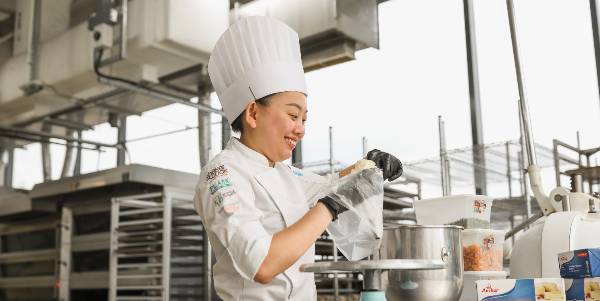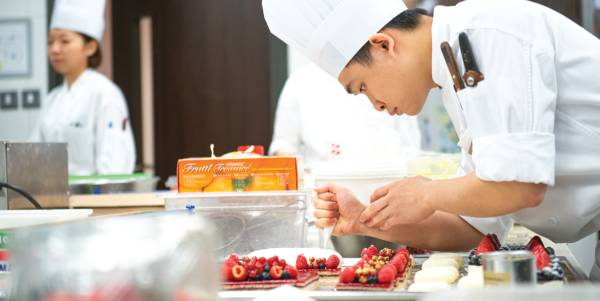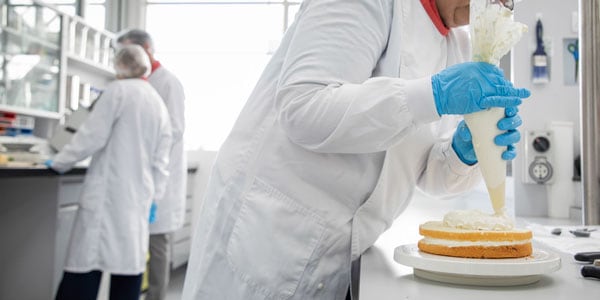Innovation is playing a central role in shaping the future of the global dairy industry.
The market is one that is constantly evolving, with shifting consumer needs and the pressures facing operators, such as adoption of new technology, labour shortages, and a drive for premiumization, in addition to making sustained R&D efforts essential to remain competitive and responsive.
Fonterra has made significant strides in UHT cream innovation, but the journey is far from over. The evolution of UHT cream is ongoing, with continuous improvements being made across a number of technical and operational dimensions.
For Fonterra, advances to UHT cream are made possible through the collaborative framework that has been developed between internal research teams and external partners. Cutting edge dairy development requires close cooperation with a network of stakeholders that includes universities, ingredient suppliers, and equipment manufacturers, among others.
These partnerships ensure Fonterra‘s innovation is grounded in practical utility and supported by the latest scientific thinking: academic collaborations are integral to broader scientific advancements within the dairy space; Fonterra‘s R&D team brings deep mastery and fundamental knowledge of dairy science and technology; ingredient suppliers contribute their expertise in formulation science; equipment manufacturers partner with R&D teams to trial new production techniques and evaluate innovative process technologies to improve throughput and consistency; and the R&D team collaborate closely with customers to co-create innovative application solutions tailored to their needs.
Working directly with chefs
In the professional foodservice sector, chefs are both key users and critical collaborators in product development. Working with a global chef network allows for insights into how UHT creams behave in real kitchen environments to be fed back into the R&D process.

Chefs’ expertise and familiarity with cream products make them essential in providing fact-based feedback on product functionality and performance. Cream is used in a variety of applications and cuisine types – including bakery, beverage and culinary uses. These different use cases require different product performance attributes, such as whip stability, pourability and heat stability.
In addition, better knowledge of the culture and language of chefs enables Fonterra to deeply understand customer needs and develop tailored products, application and service solutions to address their needs.

Collaborating internally
Just as external collaboration is critical, so too is internal cooperation across business units. Effective innovation in the UHT cream space is underpinned by integration between many other areas of business, including marketing, category management, manufacturing and engineering, R&D, quality and logistics teams. This work involves cross-functional collaboration across diverse roles in the company.
In market teams across different markets and regions play a central role in capturing feedback from customers. Through structured feedback loops, they make sure that innovation is aligned with market demand. This input provides direction to the R&D team and ensures that new products and innovations are market led and designed to meet customer and consumer needs.

In addition to identifying product innovation opportunities, the category managers, responsible for overseeing a specific product category, contribute strategic oversight and identify opportunities for expansion within the cream segment. This focus helps to prioritise R&D efforts toward projects that maximise value and are aligned with broader business objectives.

From collaboration comes innovation
Working collaboratively in this manner has allowed Fonterra to achieve progress in three key areas:
Ambient Technology One of the most transformative developments in the evolution of UHT cream has been the advancement of ambient technology – an area of innovation that reflects the combined efforts of fundamental science, product development and process engineering.
This technology enables products to be shipped and stored at room temperature (20°C to 25°C), reducing reliance on cold chain infrastructure and dramatically cutting energy usage across the supply chain—a transformative feature that reshapes the economics and logistics of dairy cream distribution.

This technology is particularly impactful in developing regions or remote areas where refrigeration is limited or unreliable. By extending the geographic and economic reach of dairy products, ambient technology helps to bridge accessibility gaps and support foodservice operations in underserved markets.
The scientific underpinnings of Fonterra‘s innovations in the area are protected by key patents. These patents relate to formulations and processes that confer thermal stability and shelf life without compromising taste or performance.

High-quality and cost-effective solutions Another area of sustained innovation is the development of UHT cream products that deliver both exceptional quality and affordability. This dual objective is critical for expanding access to full-dairy products in markets where cost remains a key barrier.
For instance, mid-tier full-dairy UHT creams have been developed specifically to meet the needs of customers seeking value without sacrificing functionality. These cost-effective options are the result of targeted research into ingredient functionality and product engineering, allowing for lower input costs while maintaining the core characteristics expected from a premium dairy cream.

Improved processing efficiencies A key pillar of ongoing development in the UHT cream space is the continuous improvement of processing efficiencies. Through focusing on optimizing production processes, manufacturers are able to enhance product quality while simultaneously achieving greater sustainability and cost-effectiveness.
These improvements go beyond operations – supporting innovation objectives through more consistent manufacturing, reducing waste, and ensuring that high-quality products can be delivered at scale. Increased efficiency also translates into benefits for partners, as cost savings and quality enhancements can be passed along the value chain.

Investing in the future
Innovation in UHT cream requires not only day-to-day research but also long-term planning, such as investments in infrastructure and production capabilities. At Fonterra, a recent demonstration of this is the construction of a NZ $150 million UHT cream facility in Edendale, New Zealand. This will enhance production capacity and introduce state-of-the-art technology to meet rising global demand.

These commitments ensure that Fonterra remains dynamic and responsive to future needs of the UHT cream category, whether they are consumer and operator driven, regulatory, or environmental. Additionally, it represents a determination to drive innovation and growth in the UHT cream space in the years to come.



